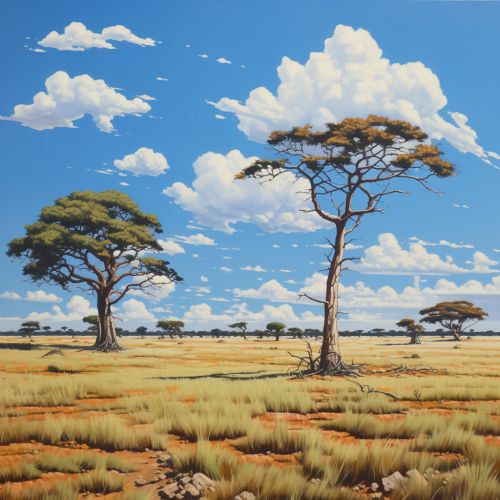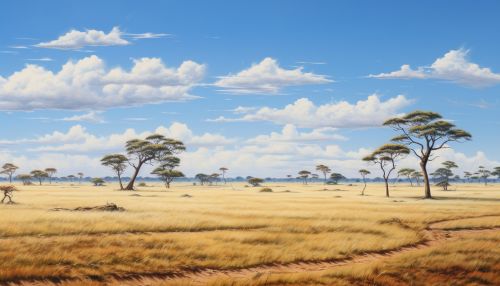Savanna Ecosystems and Fire Dynamics
Introduction
The savanna ecosystem is a type of grassland biome characterized by a mixture of trees and grasses. The unique feature of this ecosystem is its relationship with fire, which plays a crucial role in maintaining biodiversity and the structure of the ecosystem itself. This article will delve into the intricate dynamics of fire in savanna ecosystems, exploring its causes, effects, and the adaptations of flora and fauna to this fiery element.
Savanna Ecosystems
Savannas are found in the tropics and subtropics, particularly in regions with a distinct wet and dry season. They cover approximately 20% of the Earth's land area, with the largest expanses found in Africa, South America, and Australia. Savannas are home to a diverse range of plant and animal species, many of which have adapted to the regular occurrence of fire.


Flora and Fauna
The vegetation in savannas primarily consists of grasses and trees. The grasses, which make up the understory, are well adapted to fire, often regrowing quickly after a burn. The trees, on the other hand, have developed various strategies to survive fires, such as thick bark and the ability to resprout from underground parts.
The fauna of savannas is as diverse as the flora. Many large herbivores, such as elephants, zebras, and various species of antelope, inhabit these regions. These animals play a significant role in shaping the savanna landscape through their feeding habits. Predators, including lions, cheetahs, and hyenas, also roam the savannas, relying on the abundance of herbivores for sustenance.
Fire Dynamics
Fire is a common occurrence in savanna ecosystems, primarily caused by lightning strikes and human activities. These fires play a significant role in shaping the structure and function of savannas.
Causes of Fire
Natural fires in savannas are typically caused by lightning strikes during thunderstorms. However, human activities, such as hunting and land management practices, have become significant sources of fire in these ecosystems. The use of fire by humans to clear land for agriculture or to stimulate the growth of desirable plant species has been a common practice for thousands of years.
Effects of Fire
Fire has both immediate and long-term effects on savanna ecosystems. In the short term, fires can cause significant mortality among plants and animals, particularly those not adapted to survive such events. However, many species have developed adaptations that allow them to survive and even thrive in the aftermath of a fire.
In the long term, fire plays a crucial role in maintaining the structure of savanna ecosystems. By preventing the encroachment of trees into grassland areas, fire helps to maintain the open character of savannas. Additionally, fire can stimulate the growth of certain plant species, contributing to the biodiversity of the ecosystem.
Adaptations to Fire
Plants and animals in savanna ecosystems have evolved a variety of adaptations to survive the regular occurrence of fire.
Plant Adaptations
Many savanna plants have developed fire-resistant characteristics. Some trees, for example, have thick, insulating bark that protects the inner tissues from heat damage. Other plants can quickly resprout from their roots or seeds after a fire, allowing them to recover rapidly.
Animal Adaptations
Animals in savanna ecosystems have also developed strategies to survive fires. Some species, such as certain birds and insects, can quickly escape from fires by flying away. Other animals, including many large herbivores, can outrun fires, while smaller creatures may burrow underground or hide in rocky outcrops to avoid the flames.
Human Impact and Management
Humans have had a significant impact on savanna ecosystems, particularly through the use of fire. However, the relationship between humans and savannas is complex and multifaceted.
Fire Management
Fire management in savannas involves a delicate balance between allowing natural fires to occur for the benefit of the ecosystem and preventing fires that could cause harm to human life and property. This often involves the use of controlled burns, where fires are intentionally set under controlled conditions to reduce the risk of uncontrolled wildfires.
Conservation Efforts
Conservation efforts in savanna ecosystems often focus on maintaining the balance between grasses and trees, which is crucial for the survival of many savanna species. This often involves managing fire regimes to prevent the overgrowth of trees and the loss of grassland habitats.
